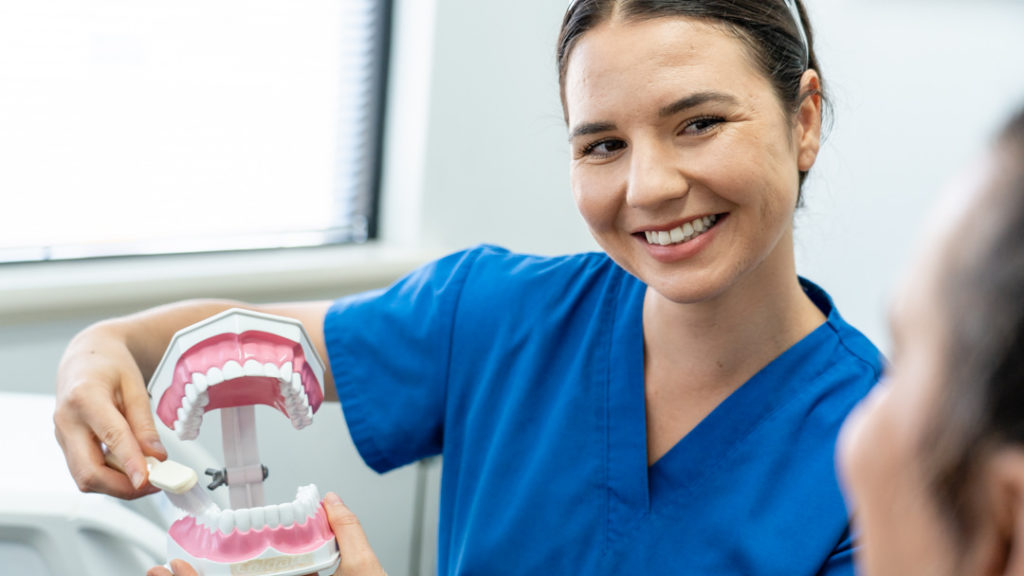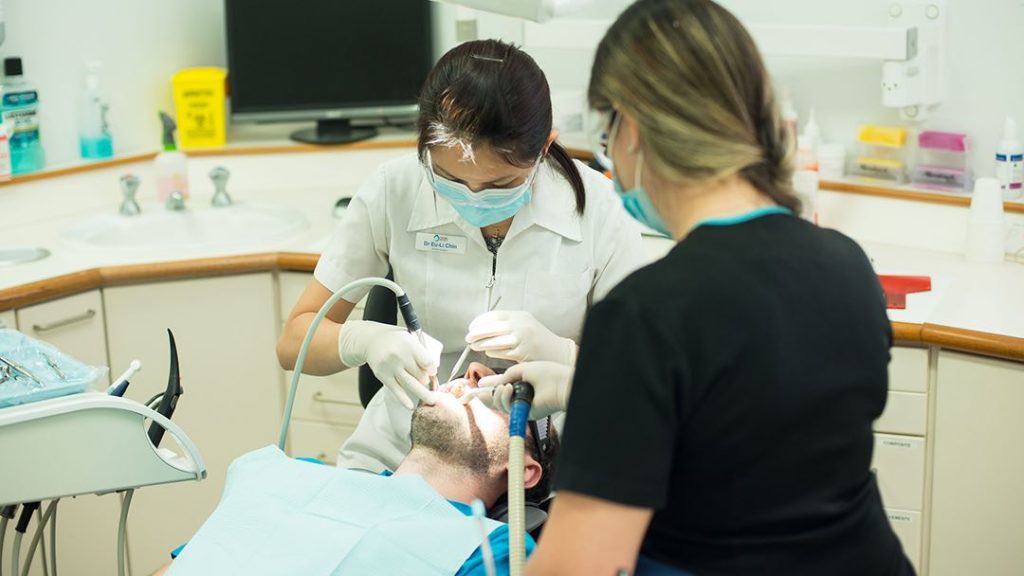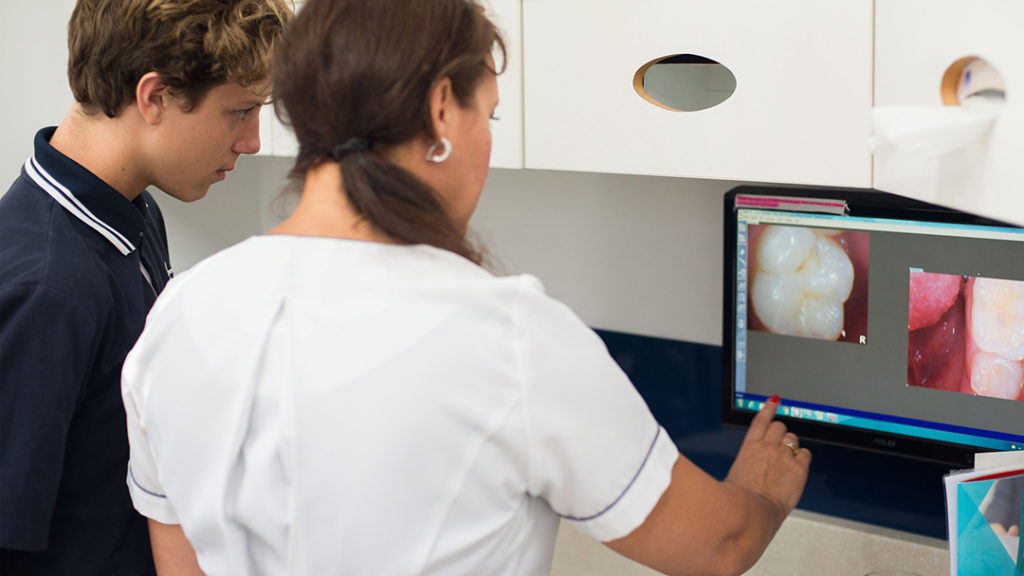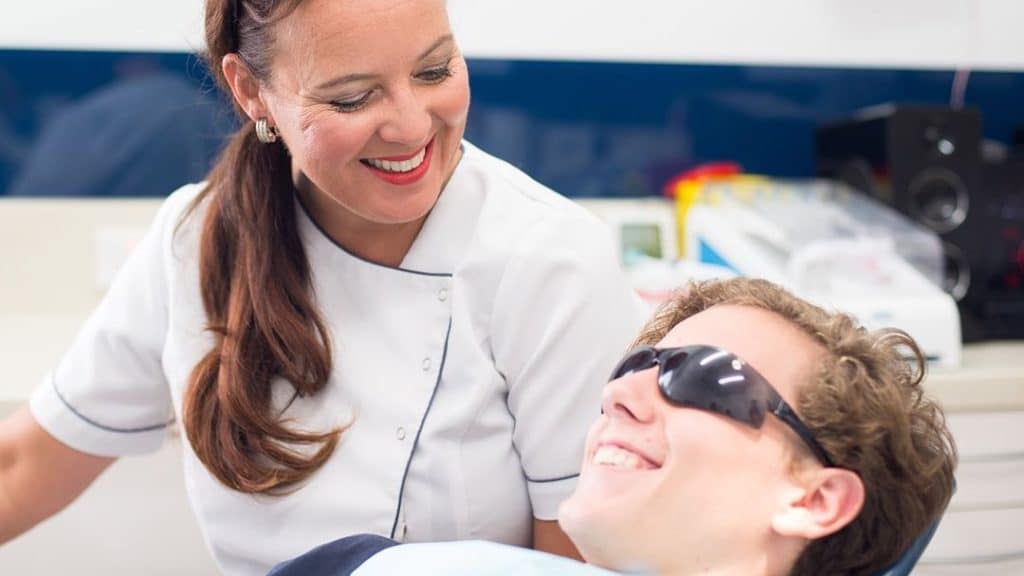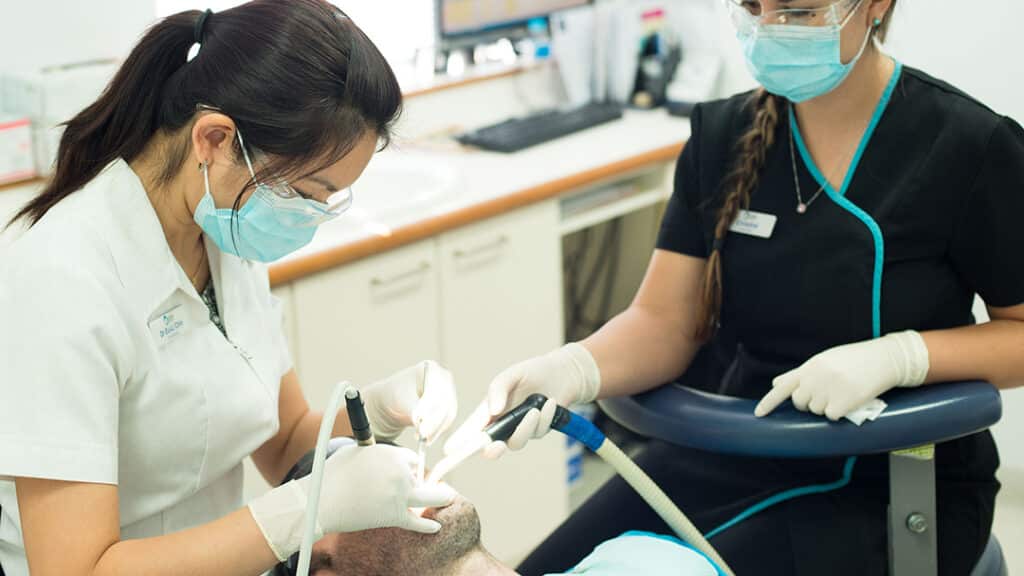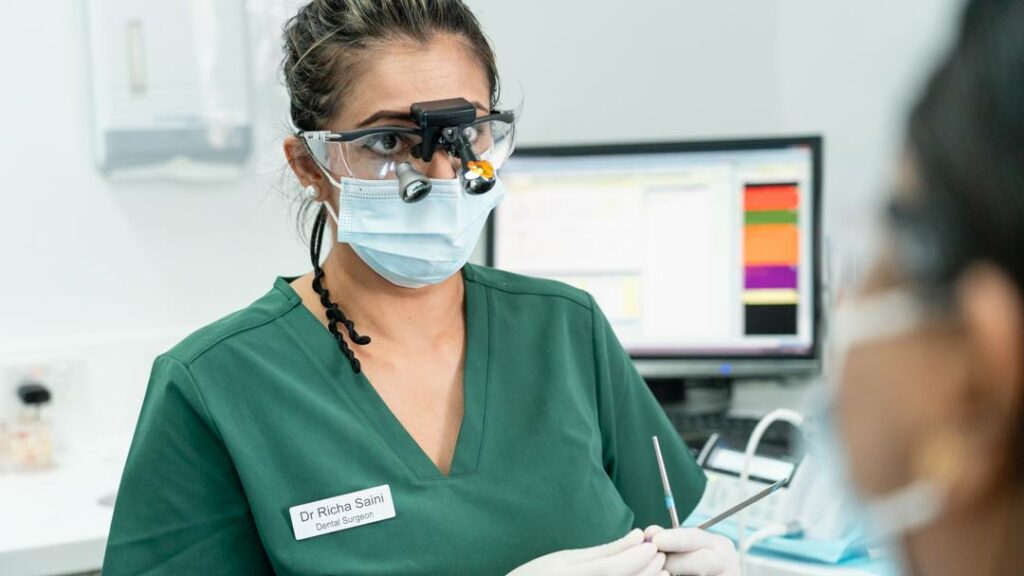how to prevent teeth stains
We are often asked how people can prevent their teeth from yellowing and staining. The answer is pretty simple – quit eating and drinking, and you’ll have amazingly white teeth. However, we know that isn’t a possible solution. If, however, you take the time to rinse with water immediately following meals and snacks, you can rinse away what is left behind on your teeth and make a huge difference.
It is important to avoid certain foods and beverages that are the worst culprits to tooth staining such as tomato-based sauces, curry, soy sauce, colas, coffee, tea, and red wine. These foods and beverages can change the color and appearance of your teeth. Drinking through a straw can help prevent contact with your teeth and can also help prevent them from yellowing with prolonged exposure to such substances.
Understanding the Causes of Tooth Staining
Understanding the causes of tooth staining begins with recognizing the impact of our daily eating, drinking, and oral hygiene habits on the overall coloration of our teeth. Tooth discolouration, leading to stained teeth, can primarily result from the consumption of pigmented and stain-causing foods. Foods high in tannins, such as tea and coffee, can lead to stubborn coffee stains. Acidic drinks, including sodas and citrus beverages, can erode the enamel layer, further exposing the yellowish dentin underneath and contributing to tooth discolouration.
Fluoride treatment, while effective in preventing tooth decay, could also cause tooth discolouration when used excessively. Adherence to a disciplined oral hygiene routine is paramount to maintain a bright smile and prevent stained teeth. This includes regular brushing, flossing, and visits to the dentist for advice.
It’s crucial to identify the specific causes of tooth staining to develop an effective prevention strategy. Reducing the intake of stain-causing foods, maintaining a robust oral hygiene routine, and seeking timely advice from a dentist are key steps to preserving a bright, healthy smile.
The Impact of Diet on Tooth Discoloration
How significantly does our daily diet contribute to tooth discoloration? The answer is quite substantially. The food and drinks we consume have a direct impact on the color of our teeth.
- Dark Foods and Drinks: Beverages like coffee, dark sodas, and red wine are notorious for staining teeth. These dark drinks contain intense color pigments called chromogens that attach to the white, outer part of the tooth (tooth enamel) causing them to stain. Similarly, dark foods like berries, tomatoes, and soy sauce can also contribute to yellow teeth.
- Acidic Foods: Acidic foods such as citrus fruits and vinegar can erode tooth enamel over time, revealing the yellowish dentin underneath. A reduced enamel layer makes it easier for dark foods and drinks to stain the teeth.
- High-Sugar Foods and Drinks: Sugary foods and drinks can lead to tooth decay, which in turn can cause discoloration.
Avoiding these dietary pitfalls can promote white teeth and a stain-free smile. However, it is equally important to maintain a regular oral hygiene routine. Brushing after meals, using a good quality toothpaste, and regular dental check-ups can further ensure a bright, healthy smile.
Importance of Regular Dental Hygiene
In addition to dietary considerations, consistent and proper dental hygiene plays a crucial role in preventing tooth staining, and thus, should be prioritized. This not only promotes healthy teeth but also aids in achieving a bright smile. Dentists recommend brushing at least twice a day using fluoridated toothpaste, which helps to prevent tooth decay and cavities. Moreover, flossing daily ensures the removal of food particles that brushing alone cannot reach.
Regular dentist appointments are also fundamental to maintaining a healthy smile. Dentists are equipped with professional tools designed to clean those hard-to-reach areas, further preventing the accumulation of plaque that leads to staining. Additionally, dentists can provide early detection of potential oral health issues, including tooth decay and cavities, allowing for prompt action and treatment.
Using a fluoridated toothpaste, attending regular dentist appointments, and maintaining a consistent oral hygiene routine are critical components in preventing tooth staining. This will not only result in professional teeth but also contribute to a brighter, healthier smile. Therefore, regular dental hygiene should not be viewed merely as a chore but as a fundamental part of maintaining overall oral health.
Exploring Professional Teeth Cleaning Services
Both regular at-home dental care and professional teeth cleaning services are essential components in the fight against tooth staining. In addition to brushing twice a day with an adult-strength fluoride toothpaste and flossing regularly, professional cleaning services can add an extra level of protection.
Your dentist can provide a deeper clean than you can achieve at home, employing special tools to remove plaque and tartar buildup that can lead to tooth loss. Regular professional cleanings also provide an opportunity for your dentist to inspect your teeth and gums for signs of any potential problems.
Professional cleaning services often include:
- Scaling: This involves removing tartar above and below the gum line.
- Polishing: Your dentist uses a special paste to remove any remaining plaque and stains, leaving your teeth bright and smooth.
- Fluoride treatment: This can help to strengthen your teeth and prevent decay.
If you’re looking to achieve a brighter smile, ask your dentist about teeth whitening and other cosmetic dentistry treatments. These dental treatments can remove stubborn stains and discoloration, allowing you to smile with confidence.
Regular, professional dental care is the key to maintaining a healthy, bright smile.
The Role of Tobacco in Tooth Staining
Tobacco usage, whether smoked or chewed, is a significant contributor to tooth staining due to its high content of tar and nicotine. The staining often presents as a yellow or brown discoloration, which can be quite noticeable. The intake of coffee, especially black coffee, and fizzy drinks can exacerbate this staining. This is because these beverages contain tannins, which can further stain your teeth.
One way to mitigate these effects is to drink water frequently throughout the day. Water helps rinse away staining substances from the teeth, thereby reducing their impact. Consuming cold foods and crunchy foods, such as apples and carrots, can also assist in scrubbing the teeth clean.
Coffee drinking, particularly iced coffee, can lead to staining. However, drinking it through a straw can minimize contact with the teeth and subsequently reduce staining. Charcoal toothpaste can also aid in removing stains, as it has natural whitening properties.
However, the most effective measure against tobacco-induced tooth staining is to quit or reduce tobacco usage. This will not only improve oral health but overall well-being.
Home Remedies to Prevent Tooth Discoloration
You can effectively combat tooth discoloration at home, and a few simple remedies may significantly help maintain your dental health and the brightness of your smile. Understanding what causes discoloration is the first step to prevention. This involves considering the types of food and drink consumed regularly.
- Dietary Choices: Certain types of food and drinks like coffee, tea, soft drinks, and energy drinks can stain teeth. Crunchy fruit and veg, or crunchy foods in general, can help clean the teeth naturally. Drinking water throughout the day also assists in rinsing away potential staining agents.
- Oral Hygiene: Brushing and flossing regularly with an appropriate amount of toothpaste can protect the outer layer of teeth. Excessive fluoride treatments or excess toothpaste could result in fluorosis, leading to discoloration.
- Professional Care: Regular dental check-ups are effective treatment methods. These can identify early signs of enamel wear, allowing for timely intervention.
Over-the-Counter Products for Tooth Stain Prevention
Consumer’s interest in maintaining a bright smile has led to a surge in the availability of over-the-counter products designed to prevent tooth staining. These products have become an integral part of the tips on how to prevent tooth staining, offering convenience and cost-effectiveness.
| Product Type |
Usage |
Benefits |
| Whitening Toothpaste |
Daily |
Removes surface stains, prevents cavities |
| Whitening Strips |
As advised on the package |
Bleach stains from deeper layers, dentist custom fit available |
| Mouthwash |
Rinse after meals |
Can prevent new stains, freshens breath |
Including water-heavy foods in your day foods can also contribute to preventing stains. They stimulate saliva production, which naturally cleanses the teeth and neutralizes acids. Regularly drinking water helps in flushing away food debris that might lead to staining.
However, for individuals with a history of cavities or other dental health concerns, seeking advice on treatments from a dental professional is advisable before using over-the-counter products for tooth stain prevention. Some products may be too abrasive or may not provide the necessary health treatments for existing dental issues.
Regular Dental Check-ups and Tooth Staining
A patient’s regular dental check-ups, in conjunction with proper oral hygiene practices, play a vital role in the prevention of tooth staining. These visits allow for early detection and treatment of potential issues including cavities, a common cause of tooth discoloration.
- Treatment: During these check-ups, your dentist will evaluate the health of your teeth and gums, and initiate action for treatment, if necessary. This involves a common cavity procedure to fill in the gaps which can otherwise lead to tooth staining over time.
- Difference between Cavities: It’s important to note the differences between cavities. While some are visible to the naked eye, others are detected through X-rays or special dental tools. Some cavities, if left untreated, can cause brown or black staining.
- Preventive Measures: Regular dental check-ups are crucial for early detection and treatment, which can prevent staining. This coupled with consistent oral hygiene practices like brushing, flossing, and using mouthwash can further reduce the risk of tooth staining.
Stop Smoking for Whiter Teeth
Smoking or chewing tobacco are the worst contributors to staining your teeth. Both of these products are detrimental to your oral health in general. Tobacco use turns your white teeth from yellow to brown in only a few short months. Frequent tooth brushing can help, but the only true solution is not using cigarettes and tobacco in the first place.
White teeth are something that we all strive for. Despite our best efforts, the foods we eat and the drinks we drink can gradually yellow our teeth. Tartar buildup contributes to tooth staining. As dentists in Innaloo who specialize in ZOOM teeth whitening procedure, we recommend that you have your teeth professionally cleaned on a regular basis. Not only will this help with tartar build-up, but it will also brighten and whiten discolored teeth, improve breath, and ensure proper dental health overall.
For best results, we recommend brushing your teeth for at least 2 minutes twice a day and following with a thorough flossing. If you enjoy brightly colored food or drink or you smoke or use chewing tobacco, you might want to consider brushing more often or rinsing with mouthwash. You may also consider tooth whitening toothpaste or mouthwash to help combat the yellowish tone.
Eat foods That Neutralize the Acids in your Mouth
Water-rich and crunchy foods such as celery, carrots, or apples naturally increase the saliva production in your mouth, which neutralizes acids and naturally rinse your teeth. Strawberries are an excellent help in this. Strawberries contain malic acid, a naturally-occurring acid perfect for combating tooth discoloration. Additionally, dairy products are good for your teeth, as they add calcium to your body and naturally neutralize the staining acids in your mouth.
If you are looking for ways to improve your smile, visit Odin Dental House in Innaloo for a consultation and learn the options available for whitening your teeth. You can discuss over-the-counter teeth whitening kits, toothpaste and mouthwashes, and lifestyle choices to help you achieve your brightest smile. Whatever you do, we recommend that you seek professional advice before trying any new teeth whitening options.
About Odin House Dental Surgery
Over the last two decades, Odin House Dental Surgery has been proud to serve the suburb of Innaloo and has grown to include 10 dentists, three oral health therapists, and 10 support staff. We have eight surgery rooms, a sterilisation room, a laboratory (where we make your mouthguards, whitening trays, and models) as well as two waiting rooms which include a small play area for children. We also have a unique “special room” complete with a massage chair, large screen TV, and even X Box!
Our dentists are all members of the Australian Dental Association and are local to Perth, so it would be no surprise if you have seen us out and about in the community.

